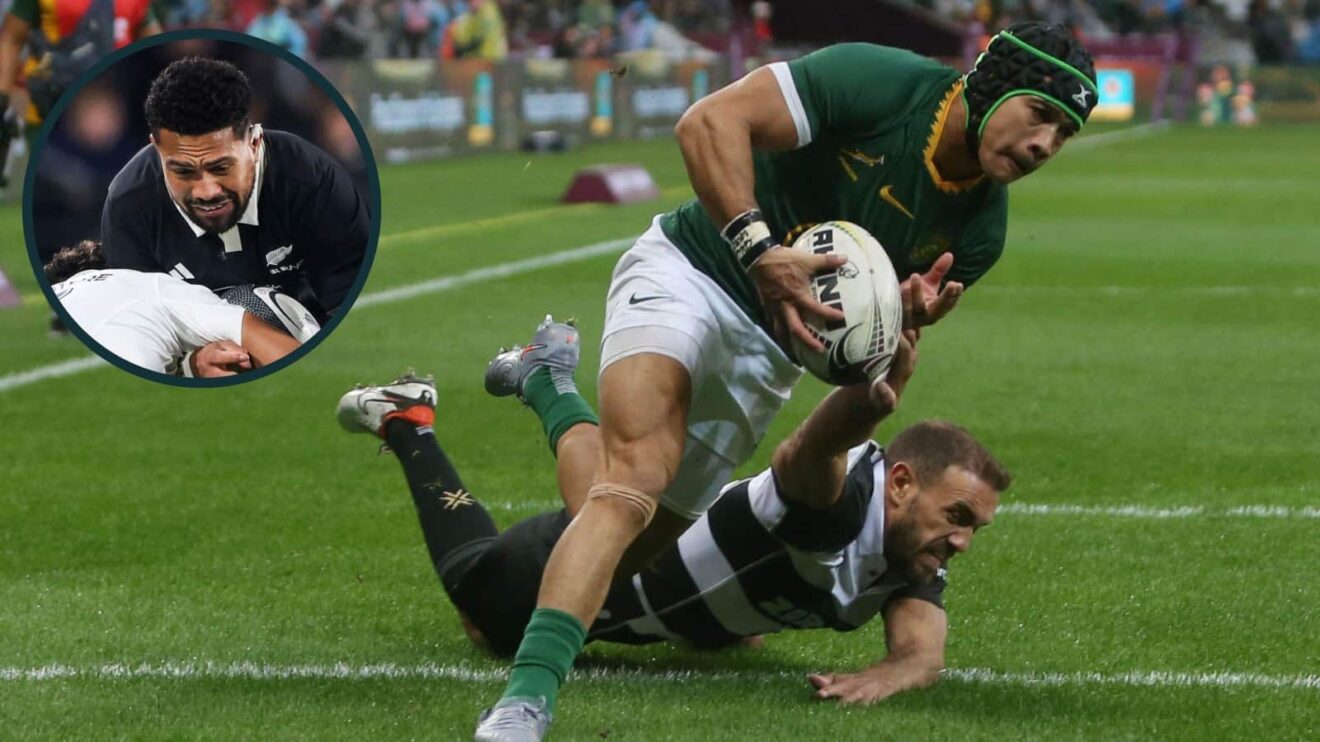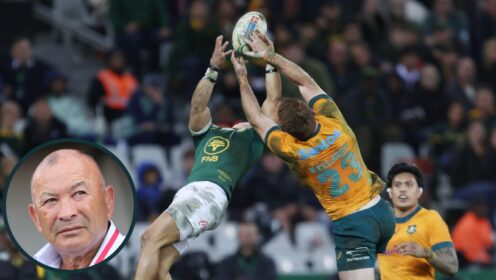Eddie Jones explains why the likes of Cheslin Kolbe and Ardie Savea are thriving as ‘smaller, more dynamic’ players backed

Springboks wing Cheslin Kolbe and All Blacks back-rower Ardie Savea.
Eddie Jones has praised the qualities of Springboks superstar Cheslin Kolbe, who continues to show his world-class talents at the highest level.
The 31-year-old made his return from injury in South Africa’s 30-22 victory over the Wallabies in Cape Town on Saturday.
Kolbe is renowned for his pace, footwork and balance but he has also improved his fundamentals, which are crucial for a modern day wing.
The speedster is excellent defensively and just as good under the high ball, and it was the latter which helped the Boks to overcome Australia in the second round of the Rugby Championship.
Handre Pollard was named man of the match for his performance in the triumph, but Jones thought the work of Kolbe elevated the fly-half’s display.
Kolbe’s influence on the Springboks
“Do you remember when you were a kid, those compressed elastic balls called ‘Powerballs’ that bounced almost to the moon and back? I’m sure Cheslin’s made from the same elastic, as his ability to bounce off tackles and get off the floor into the air is quite remarkable,” he wrote in his Planet Rugby column.
“His work rate is something sensational; he’s always looking for an intervention, a moment of innovation, a chance to change the course of the game.
“For all of Pollard’s brilliance with his tactical kicking, Kolbe made so many of his marginal kicks into winning moments due to incredible chasing and that unreal standing leap that defines his athleticism.”
Standing at 5ft 7in and almost 12st, Kolbe shows that you don’t have to be a gargantuan unit to be effective in the sport.
In fact, Jones believes that he has spotted a trend of some lighter wings being preferred by current international coaches due to the importance of the kicking and aerial battle.
“Sides are desperate to score with as few passes as possible – transition attack is now the key to winning at Test level, and teams are playing to achieve this with as few rucks as possible to prevent the defensive reset,” he wrote.
“How does this affect players? Well, we’re seeing a move back from the flat track power wings of Duhan van der Merwe, George North and co. and we’re seeing them replaced by ‘aerialists’ and ‘evaders’, players like Cheslin Kolbe, Edwill van der Merwe, Rodrigo Isgro and Max Jorgensen thrive, athletes with phenomenal standing jumps, able to challenge much bigger men than themselves and win the contest ‘upstairs’.”
‘Dynamic number eights’
The current Japan boss also believes that supposedly ‘smaller’ forwards are excelling, too, especially in the back-row where dynamism and athleticism is being preferred to sheer size in some positions.
“We’re also seeing a move to smaller, more dynamic number eights; I’m often amused by people suggesting that Ben Earl, Ardie Savea, Kwagga Smith or even our own Japanese star, Kazuki Himeno, are too small and not ‘real eights’,” he wrote.
“The simple fact is the back-row is changing, with many sides playing hybrid locks on the blindside and real fast ‘double’ sevens at eight and openside.
“At scrum time, there’s more attacking space than at any other moment in the game, so having a pacy and elusive eight like those I’ve mentioned are absolutely vital to get impetus off the base – fast and hard into the 10/12 channel when numbers in D are at their lowest.”



